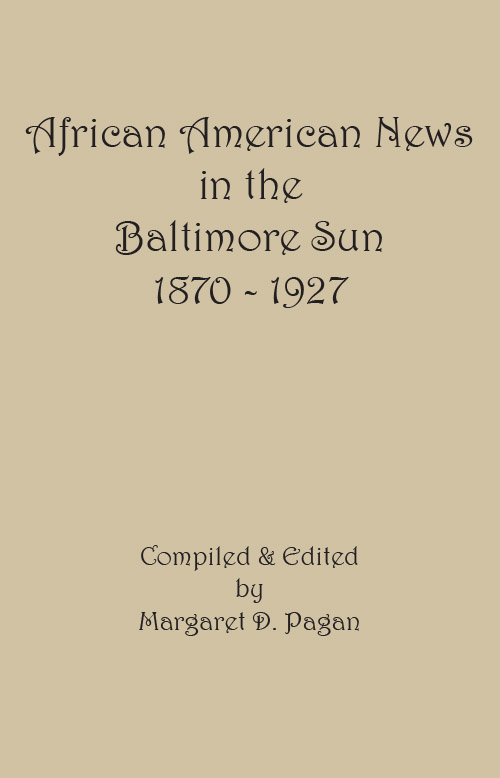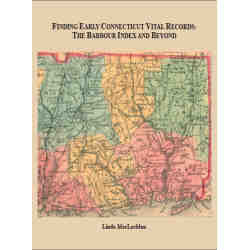
Margaret D. Pagan’s new book, African American News in the Baltimore Sun, 1870-1927, rescues and makes available information about what was, as late as 1870, the largest urban black population in the U.S. Beginning with coverage at perhaps the high point of the Reconstruction era in the U.S., the Sun published stories about politics, education, religious institutions, sports, discrimination and lynching’s, appearances by celebrities, and marriages, births, deaths, and the other stuff of everyday life in Baltimore’s black community.
Founded in 1837, the Baltimore Sun leaned “Democratic” in a substantially Democratic Party state at a time when that party favored restricting the lives of African Americans. For their part, most black Baltimoreans—who never lost the vote guaranteed by the 15th Amendment to the Constitution–supported the party of Abraham Lincoln. Consequently, we cannot assume that the Sun’s coverage of African American life was impartial or representative. Nevertheless, the newspaper did publish numerous articles germane to black Baltimoreans, and Mrs. Pagan has done an excellent job of lifting them from obscurity to give historians and genealogists a starting point for further research.
Following are a handful of sample excerpts over the book’s 57 years of coverage to illustrate what readers can expect to find in the volume overall:
- January 19, 1870. The American Colonization Society held its fifty-third anniversary meeting in New York. Hon. John H.B. Latrobe of Baltimore and others delivered reports. The Society’s ship Galconda sailed for Liberia last November with 160 immigrants . . . 26 could read and fifteen could read and write . . . The Society had given passage to and settled 2,394 persons in Liberia during the previous four years. Applications were coming in from NC and LA for a Spring voyage. The stated goal of the Society was to construct a Christian African empire.
- April 05, 1870. The election of five commissioners required for Towsontown to be incorporated as a town became the first occasion in Maryland for colored men to vote. Though the polls did not open until noon, they began gathering at the polling site in early morning. William Taylor was the first of thirty-seven jubilant colored men who’d registered, and the first to vote was Elijah Quigley.
- November 11, 1871. An action brought by John W. Fields against the Baltimore City Passenger Railway for $2,500 in damages for being put off one of their cars in which the sign: “Colored Persons Admitted Into this Car” did not appear. The jury ruled in favor of Fields though for a lesser amount.
- July 03, 1874. The Freedmen’s Bank, established as part of the Freedmen’s Bureau, went into liquidation despite efforts by Frederick Douglass and others to save it. Former slaves were at risk of losing their savings.
- Feb. 4, 1880. U.S. Senator Blanche K. Bruce and U.S. Marshall Frederick Douglass spoke before a racially mixed audience at the Presbyterian Colored Church on Madison Street about the “Progress and Future of the Colored Race in America.”
- Dec. 20, 1880. Among the deaths reported by the city health office was that of Mrs. Amelia Bowers, age 88. The principal causes of death were consumption, pneumonia, scarlet fever, diphtheria, and croup.
- October 14, 1884. A Sun newsman reported on various colored secret societies that exist for the purpose of friendship and comradery, but whose principal object was to aid the sick and bury the dead. Two of the largest were the Galilean Fishermen, headed by Thomas I. Hall; and the Good Samaritans, headed by Jacob A. Seaton. Both had meeting halls and together about 8,000 members in Maryland.
- October 26, 1894. For the first time in Baltimore, Ida B. Wells spoke at St. John African Methodist Episcopal Church. In her speech, she stated the following, “In 1891 there were 169 black men, women and children lynched; in 1892 there were 160, of whom 5 were women; in 1893 there were 159 who perished by lynching, four being women; in the first five months of the present year there were 50. . . “
- June 29, 1916. A letter to the editor from attorney W. Ashbie Hawkins questioned why Maryland Negroes should bear arms in a threatened conflict with Mexico when they would only be assigned to do menials tasks for white soldiers. He also raised other concerns about the plight of Negroes.
- April 23, 1918. Frank A. Furst chaired a campaign to raise $100,000 for St. Elizabeth’s Home for homeless colored orphans in Govans. An anonymous donor wanted to give $100 and he did so with a Liberty Bond, thereby helping his country as well as the Home.
- March 20, 1922. Plans were made by the National Urban League under the auspices of the Baltimore Interracial Committee to study industrial problems of the Negro in Baltimore. The survey would include the number of Negroes employed in various industries, their opportunities for advancement, the attitude of labor unions toward them, and the amount of wages. The goal of the Urban League was to improve relations between the races and eradicate racial injustice.




